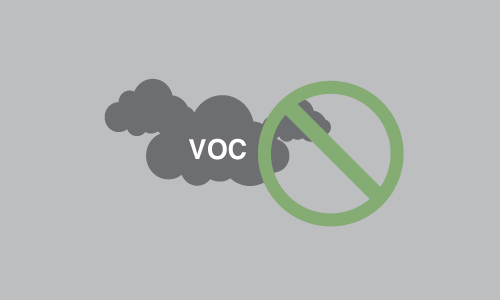Paints and coatings are used in many manufacturing processes and are responsible for a significant amount of VOC emissions, which are regulated under strict environmental laws (e.g., the Clean Air Act).
One of the most effective ways to lower the costs associated with air pollutant abatement in manufacturing is to minimize VOC emissions caused by the use of paints and coatings. Here’s how:
1. Increase Paint Transfer Efficiency
During the spray painting process, a certain amount of paint goes past the target and is wasted, thereby increasing VOC emissions.
By improving paint transfer efficiency, which refers to the amount of paint deposited on the target compared to the amount that is wasted, you can reduce paint used, and therefore – the associated VOC emissions.
Increasing paint transfer efficiency will not only help minimize VOC emissions and lower material costs but also lengthen booth filter life while reducing clean-up and maintenance costs.
It’s vital to choose the right applicator technologies (e.g., rotary atomizer bell, electrostatic) to maximize the cost efficiency of your painting procedures.
2. Automate Your Paint Line
The use of robotics increases the accuracy and efficiency of the paint line. It can optimize paint transfer efficiency and paint usage, reducing material consumption by as much as 30%.
With automation technologies, such as plural-component proportioners and automatic electrostatic spray guns, you can better monitor how the materials are used (e.g., by fine-tuning spray parameters and spraying motion) and minimize waste.
In addition, you’ll have better control over the finishing process so you can increase the consistency and quality of the product. There are also other cost-saving benefits associated with paint line automation, such as lower VOC abatement costs, increased safety, reduced liability, and lower energy costs.
3. Reduce Solvent Usage
Solvents in paints and coatings are the main source of VOC emissions in many manufacturing processes, so it’s important to minimize solvent usage.
Mix material on-demand at the correct ratio and use equipment that combines the materials closer to the gun (e.g., plural-component proportioners). Such technologies can reduce up to 80% in flushing waste, lowering VOC emissions and material costs at the same time.
You can also explore alternatives to solvent-based coatings. For example, water-based coatings have similar properties as solvent-based ones, except that water replaces almost all of the solvent as the carrier. Only a small amount of solvent is used to facilitate dispersion and the coalescence properties of the resin.
Final Thoughts
To control VOC emissions in your manufacturing plant cost-effectively, adopt a two-prong approach to optimize material usage while lowering the cost of VOC abatement with the latest technology in air pollution control.
Download our VOC Abatement Guide to learn more about effective ways to remove VOCs from your manufacturing processes.




